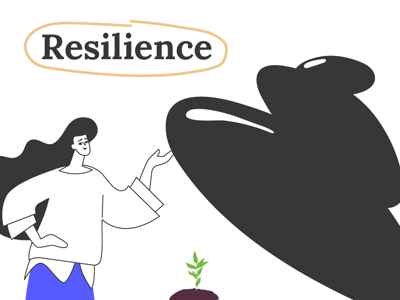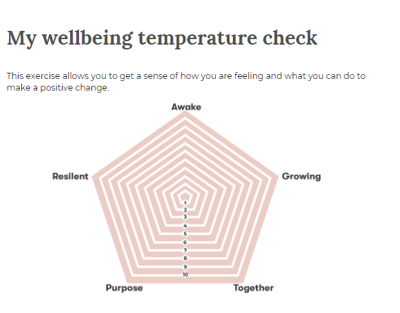Mental health as the gateway to sustained organisational performance

Despite the fear, grief and uncertainty of the pandemic, an unexpected positive came out of the event. Organisations have placed mental health at the top of their agenda, according to a recently published research paper by SilverCloud.
During the pandemic, suffering took place in silence less often and employees became more willing to share what they were going through, perhaps because it felt more like a shared experience. Managers became more sympathetic, more concerned and more willing to ask questions about their teams' wellbeing.
A survey conducted in September 2022, discovered that nearly half (46%) of employees felt their mental health had worsened since the pandemic, 1 in 5 said the loneliness of remote working had affected their mental health and 22% struggled with the blurring of boundaries between home and work.
1 in 7 said they felt stressed at work every day, and 60% said that they felt stressed at least once a week. Over a third had felt depressed over the past six months and nearly half had taken some time off because of their mental health or that of their family members.
While most leaders have a moral concern for the wellbeing of their employees, many also have a pragmatic interest, recognising that when employees are not feeling good or well, their work can suffer. In spite of this, very few organisations have built cultures that are able to sustain the wellbeing of their employees.
Mental health and wellbeing profoundly affect performance. Almost 60% of those surveyed said that their concentration and productivity were negatively impacted when they felt stressed. 40% noticed a reduction in the quality of work they produced and just over a quarter of respondents felt that work-related stress had affected their relationships with colleagues.
In 2021, the HSE found that over half of work-related health absences were attributable to stress, anxiety or depression. The government-commissioned Stevenson-Farmer Report of 2017 estimated that the total cost to employers from mental-health-related staff absenteeism and presenteeism could be as much as £42 billion annually.
The challenge is how to devise a strategy that makes a measurable and sustainable difference to the wellbeing of the workforce, keeping them well rather than providing triage when they are at the point of crisis.
8 steps to building a mental health strategy
1. Make it a board-level priority
Only the board have the weight and authority to set ambitious objectives, sign off the necessary resources and then hold executives to account in delivering against them - all factors needed to drive real change.
2. Role model from the top
Communicate how seriously the organisation takes the mental health of their employees by making sure that a member of the senior leadership has operational responsibility for the strategy and reports directly to the CEO. Modelling behaviours from the top is the fastest way to implement behaviour change in an organisation.
Many organisations have built this into their executive development programmes, encouraging leaders to prioritise and talk about their own mental health and wellbeing.
3. Measure what matters
You can't solve a problem without knowing what it is, where it is, what's causing it and who's affected by it. Neither can you determine whether any interventions are effective or if progress is sustained unless you have reliable data.
By asking subjective questions of employees (asking how they feel about their work and their manager) as well as looking at the data - such as attrition and absenteeism; the combination will provide qualitative and quantitative indicators.
4. Good work, with a good culture
People want to do work that is meaningful, for organisations that believe they matter as individuals. They want to do work that is in alignment with their values and they want to be properly rewarded (both financially and psychologically); to learn, develop and progress; to be treated fairly and supported by their manager.
People want to work in organisations where there is psychological safety, meaning a culture where people can feel they are safe to speak out and are secure in their employment. And it’s this type of culture that leads to greater levels of wellbeing.
5. Focus on your line managers
A strategic approach to mental health and wellbeing requires developing line managers and leaders to be more human-centric, leading with empathy and creating a supportive environment in which their teams can thrive.
Many managers are ill-suited to the role because they were promoted based on technical ability, without taking into account their ‘people skills’. It's important that organisations invest in developing a deep level of self-awareness and awareness of others in this influential group.
6. Support the whole person
Employers are often surprised that the most common mental health and wellbeing issues that workers raise through employee assistance programmes have nothing to do with their jobs.
For example, in our survey 63% said their mental health at work was affected by financial worries due to the cost of living crisis. A quarter (22%) of parents cited the stresses of balancing childcare with work, while one in ten had a chronic health condition.
It would be remiss of any organisation to think that because the issue doesn't originate in the workplace that they shouldn't offer support or help where possible. To carry anxiety of any kind will inevitably have an impact on their ability to show up at work undistracted and at their best.
7. Be proactive
Mental health issues don't appear overnight. They are most often the result of a cumulative neglect of not addressing smaller issues as they occur. Equipping people with coping strategies and greater resilience and building healthier habits will go a long way to preventing situations developing that people are unable to cope with.
Don't wait until the problem is too big to ignore, make it an expectation that people take time take care of their wellbeing and give them the resources and space to do so.
8. Listen to people
Recognising that everyone's circumstances and contexts are different should be the only reminder needed that a one-size-fits-all will never work. Making sure that the whole workforce has access to a variety of different resources to support them will have the greatest chance of success. But in order to inform those choices it's really important to listen to what your employees are really saying and that means giving them a safe space in which to speak openly.Ultimately, if you can get a mental-health strategy right, you will create a culture and build systemic ways of working and being that will build resilient organisations underpinned by healthy and inclusive behaviours.
 Natasha Wallace
Natasha Wallace


